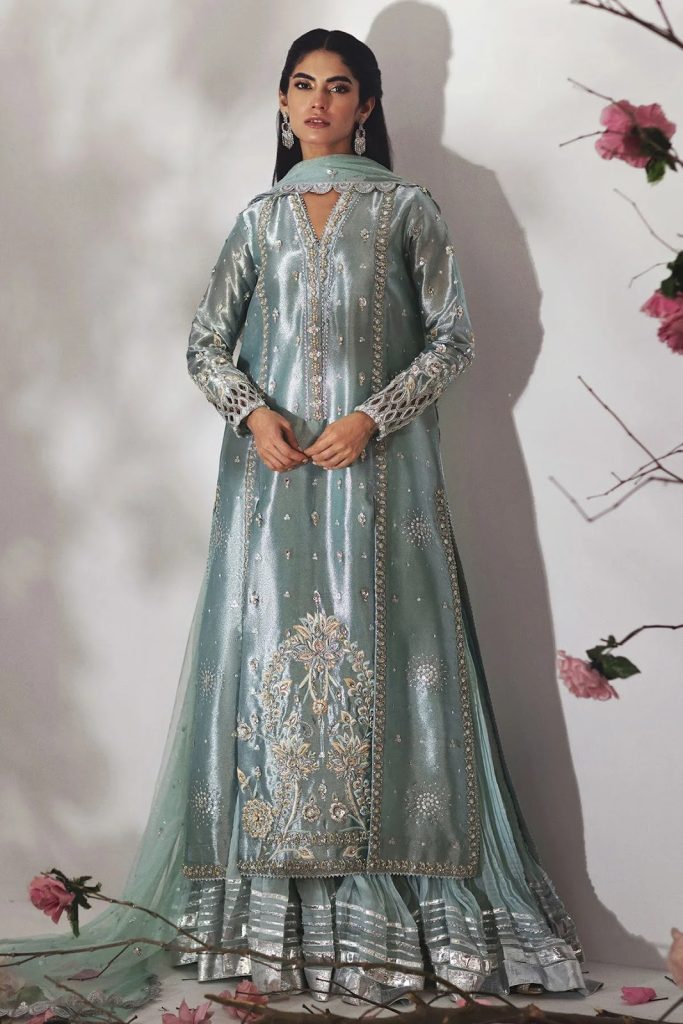
Pakistan’s fashion industry is a vibrant tapestry of tradition, creativity, and craftsmanship. Among its many defining features, embroidery and handwork stand out as the true essence of Pakistani clothing. These intricate techniques not only reflect the country’s rich cultural heritage but also embody the timeless artistry that continues to inspire designers and fashion lovers around the world. While global fashion often emphasizes minimalism or fast production, Pakistani fashion stays rooted in elegance, individuality, and craftsmanship — qualities that make Pakistani designer clothes admired worldwide.
A Legacy of Craftsmanship
Embroidery has been a part of South Asian culture for centuries, and Pakistan has carried this legacy with pride. Every region of the country has its own distinctive embroidery style, reflecting local traditions, motifs, and materials. From the mirror work of Sindh and the thread artistry of Punjab to the bold stitches of Balochistan and the delicate embellishments of Khyber Pakhtunkhwa, each style tells a unique story.
Historically, embroidery in Pakistan was more than decorative—it was a language of identity. Women used threads and needles to express emotions, heritage, and even social status. Generations passed down these skills, turning hand embroidery into an enduring art form. Today, it remains a cornerstone of both traditional and contemporary fashion, giving Pakistani clothes a soul that machines can never replicate.
Techniques That Define Pakistani Embroidery
Pakistan’s embroidery techniques vary widely, offering a blend of cultural influences and artistic innovation. Some of the most prominent styles include:
- Zardozi: An intricate form of metallic embroidery using gold and silver threads, often adorned with beads, sequins, or crystals. Zardozi work is synonymous with bridal and formal wear, reflecting luxury and grandeur.
- Gota Work: Originating from Rajasthan and now integral to Pakistani couture, this style uses gold and silver ribbon to create floral patterns and ornate borders.
- Kashmiri and Phulkari Embroidery: These feature colorful threads and detailed floral designs, often done on lighter fabrics like chiffon and georgette.
- Mirror and Beadwork: Found mostly in Sindhi attire, these embellishments add vibrancy and texture, making each outfit a visual celebration.
- Resham and Tilla Work: Often seen in wedding ensembles, these fine thread and metallic designs symbolize sophistication and cultural depth.
These traditional techniques have evolved with time, blending seamlessly with modern fashion trends and materials.
The Cultural Significance of Handwork
In Pakistan, embroidery isn’t just fashion — it’s a cultural expression. It reflects the artistry of local artisans who dedicate days, sometimes weeks, to perfect a single piece. Each stitch is a reflection of patience, skill, and devotion. The handwork done by rural craftsmen sustains families and communities, preserving centuries-old techniques that might otherwise fade in the face of mass production.
Many designers today collaborate with these artisans to create collections that respect heritage while appealing to modern aesthetics. This partnership has given rise to a new movement in fashion — one that celebrates authenticity and craftsmanship. For instance, Farah Talib Aziz, known for her ethereal pastel tones and delicate hand embellishments, beautifully combines traditional embroidery with contemporary silhouettes, embodying the essence of Pakistani luxury fashion.
From Bridal Elegance to Everyday Wear
Embroidery and handwork are not confined to bridal couture; they are integral to every aspect of Pakistani clothing. Whether it’s a heavily adorned bridal lehenga, a festive formal outfit, or a casual kurta with subtle thread detailing, the use of embroidery adds sophistication and depth.
Designers today are experimenting with minimalistic embroidery for everyday pret wear, making traditional elements accessible to younger audiences. This shift shows how handwork continues to evolve — no longer limited to grand occasions but now incorporated into modern, wearable designs that maintain cultural roots.
Sustainability Through Craftsmanship
In an era dominated by fast fashion, hand-embroidered and handcrafted garments represent sustainability and conscious consumption. Every piece made by hand takes time and effort, promoting slower production cycles and higher quality standards. Unlike mass-produced clothing, embroidered Pakistani outfits are made to last, often becoming heirlooms passed from one generation to another.
Moreover, supporting handwork sustains rural economies and provides employment to thousands of skilled artisans across Pakistan. By purchasing handcrafted clothing, consumers are not just buying fashion—they’re supporting an entire ecosystem of cultural preservation and ethical craftsmanship.
Global Recognition of Pakistani Embroidery
Pakistani embroidery has gained international recognition for its artistry and refinement. Designers frequently showcase embroidered collections on global platforms such as London, Dubai, and Paris Fashion Weeks, highlighting the versatility and elegance of Pakistani craftsmanship. The global diaspora has also played a significant role in introducing embroidered Pakistani attire to Western markets, where the blend of tradition and modern design appeals to a wide audience.
Online platforms have made these creations more accessible than ever. Fashion brands like Ranza Wear are showcasing a curated range of embroidered outfits that capture the spirit of Pakistani tradition while catering to modern global tastes. This bridge between culture and commerce highlights how embroidery remains central to Pakistan’s fashion identity — timeless, expressive, and innovative.
Technology Meets Tradition
While embroidery is rooted in handwork, technology has begun to complement craftsmanship rather than replace it. Designers now use digital tools to conceptualize motifs before artisans bring them to life by hand. This collaboration between innovation and tradition ensures efficiency without compromising artistry. Machine embroidery may speed up the process, but the touch of the artisan’s hand continues to define authenticity and character in each piece.
This fusion of traditional and digital craftsmanship positions Pakistan’s fashion industry as one of the most dynamic in South Asia — honoring its roots while embracing modern techniques to reach global audiences.
Conclusion
The role of embroidery and handwork in Pakistani clothes extends far beyond design — it represents culture, history, and identity. Every stitch carries the legacy of generations who poured their skill and soul into their craft. As global appreciation for artisanal work grows, Pakistan stands at the forefront of this revival, offering garments that combine creativity with cultural depth.

